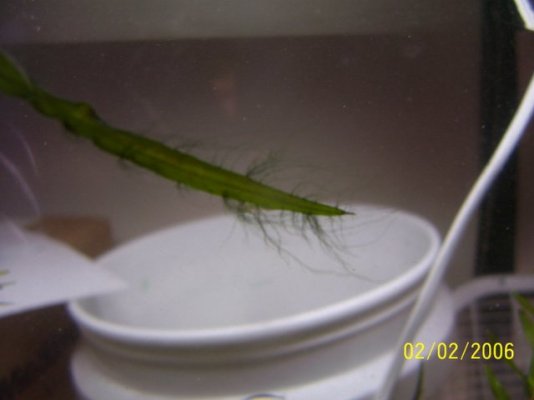BlazerFRS
Aquarium Advice Freak
I've had this algae growing pretty rapidly in my tank of late.... I've been trimming the most heavilly affected leaves. It seems to have appeared after i dosed my PO4 to 1ppm and added 5 mL of Leaf Zone the other day.
I've been running 15-20ppm of CO2, but my mix dided last night, so now i've got like 4 ppm Making a new mix right after I post this.
Making a new mix right after I post this.
My levels are:
NO3- 15ppm
PO4- .5ppm (Using the AP kit, so kinda tough to tell)
pH 7.4 (like I said, my CO2 ran out)
dKH- 5
Plants are as listed in my sig
I'm feeling I either OD'd PO4 w/o realizing it, or the iron in the leaf zone triggered the algae.
I've added a small PH to one coner of the tank to increase water movement, and to dissolve my CO2.
What do you guys think?
Here's the pic:
I've been running 15-20ppm of CO2, but my mix dided last night, so now i've got like 4 ppm
My levels are:
NO3- 15ppm
PO4- .5ppm (Using the AP kit, so kinda tough to tell)
pH 7.4 (like I said, my CO2 ran out)
dKH- 5
Plants are as listed in my sig
I'm feeling I either OD'd PO4 w/o realizing it, or the iron in the leaf zone triggered the algae.
I've added a small PH to one coner of the tank to increase water movement, and to dissolve my CO2.
What do you guys think?
Here's the pic:

